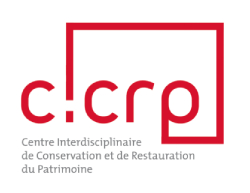
Author: mikael
The banner of Saint Blaise
Issues and challenges in the restoration and presentation of a double-sided artwork The Petit Palais museum has been working for many years in close collaboration with the CICRP and is offering the opportunity to the public to discover the scientific studies and restorations that the works
Neoformation of sulphates as a factor in the deterioration of monuments: isotopic tracing (S, O, B) of internal and external pollution sources (‘BOS’ project)
Duration: 2002–2009 CICRP: Philippe Bromblet, Jean-Marc Vallet Partnerships(s): Bureau of Geological and Mining Research (BRGM), Historic Monuments Research Laboratory (LRMH) and Olivier Rolland, restorer This research programme, launched in 2002 on Bourges Cathedral, has subsequently benefited from financing for a duration of two years (2004–2006) under the National
Identification and behaviour of PVC materials
Duration: 2008–2009 CICRP: Alain Colombini Partnership(s): Museums of France Research and Restoration Centre Centre (C2RMF) A research programme on the identification and behaviour of PVC materials was undertaken in liaison with the Museums of France Research and Restoration Centre (C2RMF), primarily from analyses carried out on pure PVC
Deterioration of Celluloid Objects in Collections (ALTOCECOL)
Duration: 2010–2011 CICRP director: Alain Colombini Partnership(s): Research Centre for the Conservation of Collections (CRCC); ARC-Nucléart; Laboratory of Molecular and Macromolecular Photochemistry of Clermont-Ferrand; Museums of France Research and Restoration Centre (C2RMF), in the context of a Regional Natural Park of Corsica (PNRC) This project focuses on celluloid,
Research on the identification and degradation of rubbers
Duration: 2010–2011 CICRP: Alain Colombini Partnership(s): Research Centre for the Conservation of Collections (CRCC), Laboratory of Molecular and Macromolecular Photochemistry (LPMM); Museums of France Research and Restoration Centre (C2RMF); Gwenola Corbin, conservator-restorer, National Centre of Plastic Arts (CNAP) grant Under the restoration research allowance granted to Gwenola Corbin
Research for a substitute gas to ethylene oxide for the decontamination of heritage works
Duration: 2006–2010 CICRP programme steering: Katia Baslé (director), Fabien Fohrer Partnership(s): CRPAA, University of Bordeaux 3 The use of ethylene oxide is becoming increasingly limited due to its toxicity and the fact that it will be banned for the treatment of contaminated cultural property, without any other method
Research on the phenomenon of Stegobium paniceum infestation
Duration: 2003–2010 CICRP: Katia Baslé, Nicolas Bouillon, Fabien Fohrer, Odile Guillon Partnership(s): Institute of Archaeomaterials Research, UMR CNRS 5060, IRAMAT-CRPAA; University of Bordeaux 3; Agro Techmo Hygiene, University of Perpignan Following serious conservation problems tied to environmental conditions, particularly the deterioration of organic material due to infestation by
Alteration process of stone by crystallisation of soluble salts
Duration: 2007–2010 CICRP programme steering: Philippe Bromblet (director) and Jean-Marc Vallet Partnership(s): Center for Interdisciplinary Nanoscience of Marseille (CINaM), Paul Cézanne Aix University – Marseille III The research efforts on the role of soluble salts in the alteration of materials have been carried out primarily in the context
Caromb stone
Duration: 2007–2011 CICRP: Philippe Bromblet Partnership(s): Regional Archaeology Department and Regional Directorate of Cultural Affairs (DRAC), Provence Alpes Côte d'Azur; Vaucluse Archeology Department; Laboratory of Medieval Mediterranean Archaeology; Historic Monuments Research Laboratory (LRMH) The purpose of this project is to study the use of Caromb stone in construction


